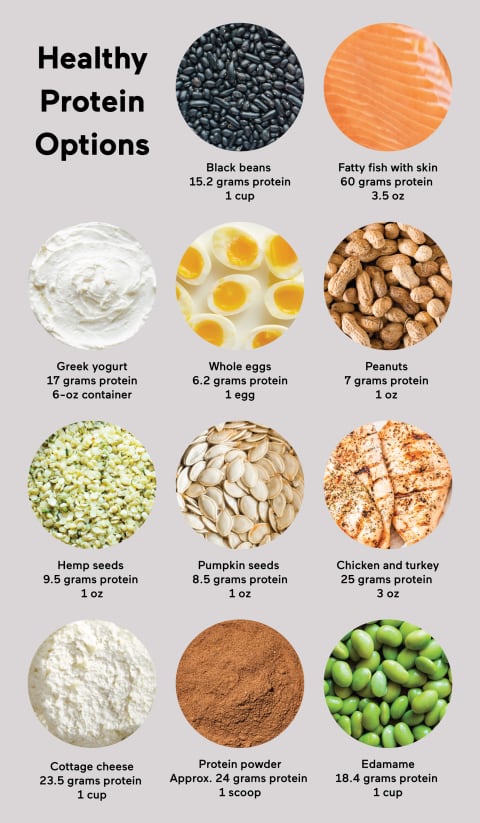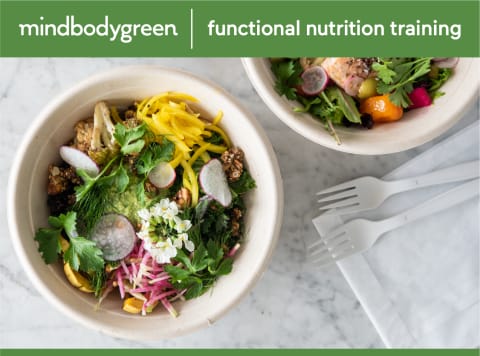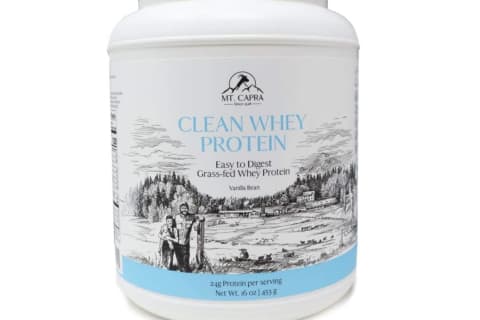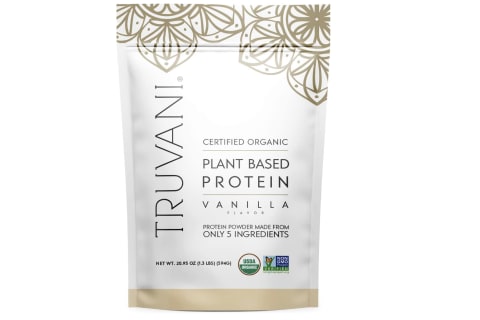Advertisement
What Are Lean Proteins? Plus, 10 Healthy Options

Cutting out high-fat foods and sticking to low-fat foods like lean proteins is commonly recommended as a way to lose weight and reduce the risk of health conditions like heart disease.
But are low-fat proteins healthier than proteins that are higher in fat? And when did lean proteins become such a thing in the first place?
Here's what you need to know about lean proteins, including what they are, when they're recommended over higher-fat protein sources, and if you should be prioritizing lean protein foods in your diet.
What is lean protein?
Lean proteins are protein sources that are low in fat and cholesterol—a waxy, fat-like substance. Skinless chicken breasts, egg whites, and lean cuts of beef are examples of lean proteins.
While some protein sources are known as lean because they're generally low in fat, the USDA has its own categorization system for labeling lean protein products like meat.
When you see "lean" stamped on a fish or meat product, it means that a 100-gram serving contains less than 10 grams of fat, 4.5 grams or less of saturated fat, and less than 95 mg of cholesterol.
An "extra lean" label means that the same serving contains less than 5 grams of fat, less than 2 grams of saturated fat, and less than 95 mg of cholesterol.
Other food products, like frozen meals, can be labeled as "lean" and "extra lean" as well, as long as they meet certain fat content criteria.
Summary
Healthy lean protein options
While some people need to limit their overall fat intake due to medical reasons, most people don't have to choose their protein sources based on their fat content.
Instead, when shopping for proteins, it's best to focus on variety and nutrient density.
Maggie Moon, M.S., R.D., recommends incorporating both plant and animal-based sources of protein into your diet to cover your protein needs.
"I like to mix it up throughout the week between plant proteins and animal proteins. My favorite protein sources are plant protein foods like pistachios and tofu, plus all kinds of seafood. I also love getting protein from whole grains, all kinds of beans, nuts, seeds, chicken, and lactose-free yogurt," Moon tells mindbodygreen.
Here are a few examples of healthy plant- and animal-based protein sources, including both lean and higher-fat options:
Legumes
Beans and lentils are packed with plant-based protein and fiber, both of which help you feel full and satisfied after eating.
A 1-cup serving of black beans1 provides 15.2 grams of protein and 15 grams of fiber, which is important for digestive health and satiety.
TRY THEM IN: A Fiber-Packed Spiced Black Bean Soup
Fatty fish with skin
Fish skin is a concentrated source of nutrients like collagen2 and fatty acids3, so there's no reason to avoid it if you like it.
A 3.5-ounce serving of salmon with skin4 provides a whopping 60 grams of protein. Sardines are another excellent source of protein high in healthy fats. One can of sardines contains 22.6 grams of protein5 and is loaded with calcium, B12, and the omega-3 fats DHA and EPA.
TRY IT IN: A Brain-Healthy Salad Bowl
Greek yogurt
Greek yogurt is higher in protein compared to regular yogurt. A 6-ounce container of Greek yogurt provides6 17 grams of protein, while the same serving of regular yogurt contains7 just 6 grams.
And you don't always have to choose low-fat yogurt! Some studies have linked full-fat dairy intake to a lower risk of obesity8. So, if you like higher-fat dairy products, that's perfectly fine. Just make sure to choose unsweetened yogurt whenever possible.
TRY IT IN: A Mint-Chocolate Collagen Smoothie
Whole eggs
One egg provides 6.2 grams of protein9, which is concentrated in the white. But, if you just eat the white, you'll be missing out on a bunch of important nutrients.
The yolk is where it's at when it comes to nutrition, providing zinc, B12, choline, selenium, iron, and many other vitamins and minerals. If you can, choose humanely raised eggs, like eggs from pastured hens.
TRY THEM IN: Make-Ahead Masala Egg Bites
Nuts and nut butters
Nuts and seeds are a high-fat protein source that is often recommended by dietitians, like Cannon. "Nuts and seeds are great sources of protein that are higher in fat. It's great when one food source provides both protein and healthy fats because it offers the benefits of both nutrients in a neat package,' Cannon says.
Peanuts (which are technically a legume) provide around 7 grams of protein10 per ounce, while almonds pack around 6 grams11 per ounce.
TRY IT IN: No-Bake Nut Butter Cookies
Seeds
Certain seeds, like hemp seeds and pumpkin seeds, are high in protein. Hemp seeds provide 9.512 grams of protein per ounce, while pumpkin seeds contain 8.513 grams per ounce. Although seeds are tiny, they're nutrient-dense and can be sprinkled on dishes like oatmeal and salads to bump up the protein content.
TRY THEM IN: A Mood-Boosting Nut & Seed Snack Mix
Chicken and turkey
However, when you're choosing animal proteins, quality is important. "For my clients who want to incorporate meat and poultry, I recommend getting the highest quality available and that they can afford. This means prioritizing meat and poultry that are ethically and ecologically raised," says Cannon.
TRY IT IN: Stir-Fried Turmeric Chicken
Protein powder
Protein powders, like plant protein and whey protein, can be easily incorporated into smoothies, chia pudding, oatmeal, and even soups to boost protein content. Most protein powders provide around 24 grams of protein per scoop.
Some protein powders can contain quite a bit of added sugar, so it's best to opt for unsweetened or naturally sweetened versions with minimal added ingredients.
TRY IT IN: Butterscotch Sea Salt Milkshake Smoothie
mbg- Approved Protein Powders
Cottage cheese
If you're looking for a high-protein breakfast or snack option, try out cottage cheese. It packs 23.5 grams of protein16 per cup and is rich in vitamins and minerals like calcium, B12, and selenium.
Plus, it can be paired with sweet or savory ingredients like berries or vegetables. Choose 1% or 2% if you'd like a lower fat version, or go for whole if you'd like a richer taste.
TRY IT IN: Protein-Packed Savory Spinach Pancakes
Edamame
Most people think of edamame as an appetizer, but it's also a high-protein vegetable that can be used to boost the protein content of plant-based meals.
Edamame provides 18.4 grams of protein per cup17 and is a rich source of magnesium and folate. Try tossing some edamame into grain bowls and salads for an extra boost of nutrition.
TRY IT IN: Vegan Watermelon Poke Bowls

History of lean proteins
Fat is a nutrient that's been demonized for decades18. Starting in the 60s, health organizations like the American Heart Association19 began recommending limiting high-fat foods—especially those high in saturated fat—as a way to lower heart disease risk and manage body weight.
Low-fat, higher-carb diets started to be seen as healthier than diets that were rich in fat and lower in carbs. Why, you ask? Not only are fats much higher in calories than carbs—9 calories per gram compared to 4 calories per gram—but it was thought that eating saturated fats contributed to health issues like heart attacks and heart disease.
This led health experts to recommend low-fat, high-carb diets focused on foods like lean proteins, butter replacements, skim milk, and low-fat breakfast cereals as a way to manage body weight and lower chronic disease risk.
But, guess what? Rates18 of obesity and health conditions like diabetes—both of which are powerful predictors of future heart disease risk20—continued to climb as intake of added sugar and carb-rich foods replaced higher-calorie foods rich in fat. For example, diabetes prevalence21 increased from 0.93% in 1958 to 7.40% in 2015.
Of course, there are other factors to blame for the surge in obesity and chronic health conditions over the last few decades, but some researchers suggest that this dietary shift played a major role22.
Summary
Why it's time to embrace new proteins
Now, back to lean proteins. Most health care providers and regulatory agencies still recommend lean proteins over higher-fat foods in order to protect against heart disease23.
Saturated fat and cholesterol, found in foods like chicken skin, egg yolks, and full-fat dairy, are usually categorized as inherently "bad" for you, while unsaturated fats found in plant foods are viewed as "good" fats.
But experts argue18 that this oversimplification of fats—which are a highly complex group of compounds—is not helping anyone. Narrowing in on a single nutrient rather than viewing the diet as a whole has led to a lot of confusion in the nutrition world and has led most people to view any food high in saturated fat as unhealthy.
While it's true that it's probably not great for your health to follow a diet that's super high in saturated fat and cholesterol, recent research24 shows that healthy sources of saturated fat25 aren't strongly linked with increased heart disease risk and that overall dietary intake is what's most important when it comes to reducing heart disease risk and promoting overall health.
Science showcase:
This doesn't mean you should make butter, fatty cuts of meat, and cream the focus of your diet, but it's important to choose foods based on their nutritional value rather than their fat, cholesterol, or calorie content.
Abby K. Cannon, J.D., R.D., CDN, agrees. "I'm more concerned with quality than leanness," Cannon tells mindbodygreen. "I usually use the term 'good quality' protein instead of 'lean' when discussing protein with my clients and when creating meal plans," she says.
For example, compared to egg whites26, egg yolks9 are high in fat and cholesterol but also provide essential nutrients lacking in egg whites like B12, zinc, iron, selenium, and choline.
Higher-fat protein options like salmon with skin4 are much richer in most vitamins and minerals compared to lean, skinless fish like cod27.
The bottom line is that lean doesn't translate to healthier. All it means is that a food is low in fat and cholesterol.
Summary
Frequently Asked Questions
What are lean proteins for vegetarians?
Most plant-based proteins are low in fat, so vegetarians have plenty of protein sources to choose from. Beans, lentils, edamame, and pea protein powder are just a few examples of lean, plant-based protein. Lacto-ovo vegetarians can also incorporate animal-based sources of lean protein like egg whites and lower-fat dairy into their diets to increase their protein intake.
Are eggs lean protein?
Egg whites contain zero grams of fat, making them a very lean source of protein. Whole eggs do contain fat and cholesterol, but they're a rich source of essential nutrients like choline, B12, and selenium, so you shouldn't shun the yolks unless you have to follow a low-cholesterol diet for medical reasons.
Is peanut butter lean protein?
Although peanut butter does contain protein, it's considered a fat. A 2-tablespoon serving of peanut butter provides 9 grams of protein and 16 grams of fat, so it can't be considered a lean protein.
The takeaway
Lean proteins are often thought of as healthier than protein sources that are higher in fat, but this isn't always the case.
There are a number of higher-fat protein sources, like fatty fish, full-fat Greek yogurt, and whole eggs that are packed with important nutrients like vitamins, minerals, and essential fatty acids.
Rather than choosing your protein sources based on their fat content, it's best to pick your proteins—and all other foods in your diet—based on their overall quality and nutrient density.
27 Sources
- https://fdc.nal.usda.gov/fdc-app.html#/food-details/173735/nutrients
- https://www.ncbi.nlm.nih.gov/pmc/articles/PMC8847946/
- https://www.ncbi.nlm.nih.gov/pmc/articles/PMC6683256/
- https://fdc.nal.usda.gov/fdc-app.html#/food-details/169813/nutrients
- https://fdc.nal.usda.gov/fdc-app.html#/food-details/175139/nutrients
- https://fdc.nal.usda.gov/fdc-app.html#/food-details/1942484/nutrients
- https://fdc.nal.usda.gov/fdc-app.html#/food-details/171284/nutrients
- https://pubmed.ncbi.nlm.nih.gov/29609865/
- https://fdc.nal.usda.gov/fdc-app.html#/food-details/2342631/nutrients
- https://fdc.nal.usda.gov/fdc-app.html#/food-details/174263/nutrients
- https://fdc.nal.usda.gov/fdc-app.html#/food-details/170158/nutrients
- https://fdc.nal.usda.gov/fdc-app.html#/food-details/170148/nutrients
- https://fdc.nal.usda.gov/fdc-app.html#/food-details/170556/nutrients
- https://fdc.nal.usda.gov/fdc-app.html#/food-details/171534/nutrients
- https://fdc.nal.usda.gov/fdc-app.html#/food-details/171496/nutrients
- https://fdc.nal.usda.gov/fdc-app.html#/food-details/172182/nutrients
- https://fdc.nal.usda.gov/fdc-app.html#/food-details/168411/nutrients
- https://www.ncbi.nlm.nih.gov/pmc/articles/PMC5577766/
- https://www.ncbi.nlm.nih.gov/pmc/articles/PMC9794145/
- https://www.ncbi.nlm.nih.gov/pmc/articles/PMC4888905/
- https://pubmed.ncbi.nlm.nih.gov/33651562/
- https://www.ncbi.nlm.nih.gov/pmc/articles/PMC8892920/
- https://www.heart.org/en/healthy-living/healthy-lifestyle/lifes-essential-8/how-to-eat-better-fact-sheet
- https://pubmed.ncbi.nlm.nih.gov/32562735/
- https://pubmed.ncbi.nlm.nih.gov/36477384/
- https://fdc.nal.usda.gov/fdc-app.html#/food-details/2342645/nutrients
- https://fdc.nal.usda.gov/fdc-app.html#/food-details/171956/nutrients



